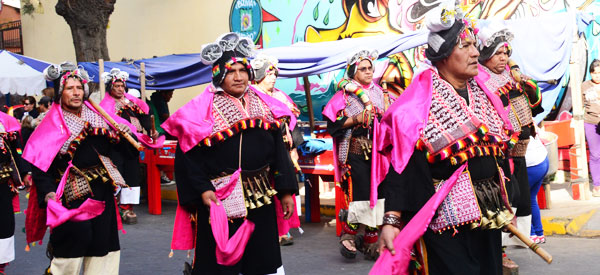
|
TeachAIDS HIV materials used to overcome stigma and lack of awareness in Bolivia
Stanford student Jill Huckels was baffled to see a child refusing to take his daily HIV medication on the outskirts of Cochabamba, Bolivia. The young boy had contracted HIV perinatally but been kept unaware of his HIV status by his parents to prevent the bullying and discrimination that typically follow a diagnosis of HIV. Consequently, he was unable to grasp the importance of the medications he was encouraged to take daily, and risked serious deterioration of his health.
Jill noted that the lack of HIV knowledge, and the stigma associated with this condition, is pervasive throughout Bolivia and likely contributes to the increasing incidence of HIV infection in many communities throughout this country. With this in mind, on a recent Impact Abroad service-learning trip she and seven of her classmates endeavored to promote sexual health education in Cochabamba. Aiming to spark a conversation that would be highly informative while reducing the stigma associated with HIV, they implemented a suite of programs designed to engage all members of the community.
Having been introduced to the TeachAids materials through TeachAIDS Founder and CEO Dr. Piya Sorcar’s Research-Based Interventions in Global Health class at Stanford University, Jill was eager to integrate the animated tutorials into their sexual health education program. She and her team partnered with the Bolivian chapter of La Casa de Los Niños, which seeks to promote the education, recovery and reintegration of disadvantaged and children through community outreach programs. Together, they were able to reach over eighty children who were afflicted with disease, separated from their parents, or displaced from their homes.
“These children have endured homelessness, violence, abuse, and abandonment. We aimed to give them hope that there is something they can actively do about their health,” Jill shared.
The eagerness of the children to learn about HIV led Jill to and her classmates coordinated two movie nights to screen the video versions of the TeachAids software for the broader community. As they planned these events, they faced major resource constraints. Unwilling to allow these challenges to prevent the dissemination of this important information, Jill created an intimate theater using a projector and a white blanket to accommodate parents and their young ones on the first night and teenagers on the second. “The movie screenings were crucial in instigating a community-wide dialogue on HIV,” Jill explains, “and the children could hardly contain their excitement during the animations.”
Jill and her team did not stop there. They initiated a sexual health fair in a community park, and facing even greater resource constraints, displayed the TeachAids tutorial for dozens of children on a laptop. The children crowded around the makeshift fifteen-inch cinema and avidly shouted answers to the questions posed in ‘Doctors Challenge’ section of the animation.
Jill is optimistic that despite the stigma and lack of awareness associated with HIV, the national discussion required to combat HIV is possible. She noted that “this is the decade where Bolivians, for the first time, are willing to hear about HIV.”
We applaud the efforts of Jill and her Stanford classmates in taking these creative and meaningful steps towards making HIV education available in a nation acutely affected by HIV. The Stanford community nurtured TeachAIDS in its earliest days, and incredibly dedicated Stanford professors, students, and student groups continue to be critical partners in propagating TeachAIDS HIV prevention education materials throughout the world.
Photo: HIV awareness remains low in Bolivia, while stigma surrounding this condition is pervasive